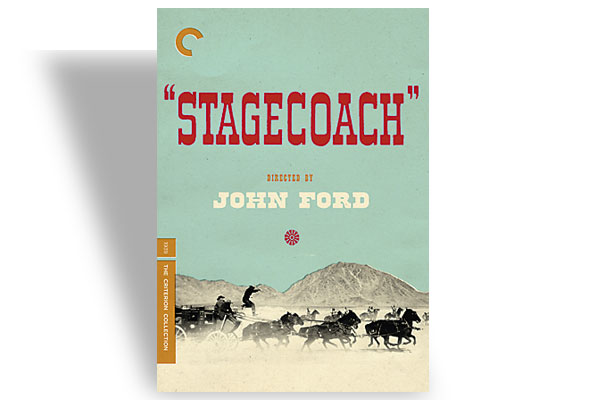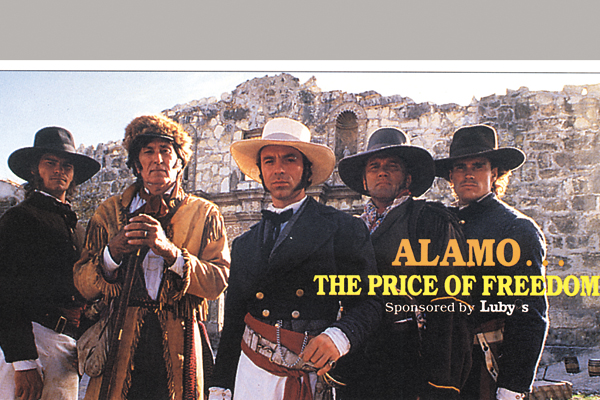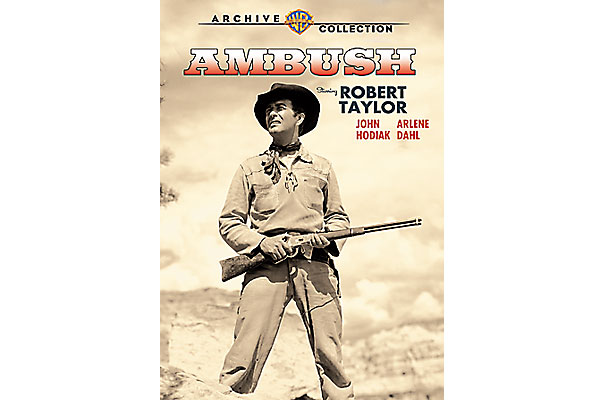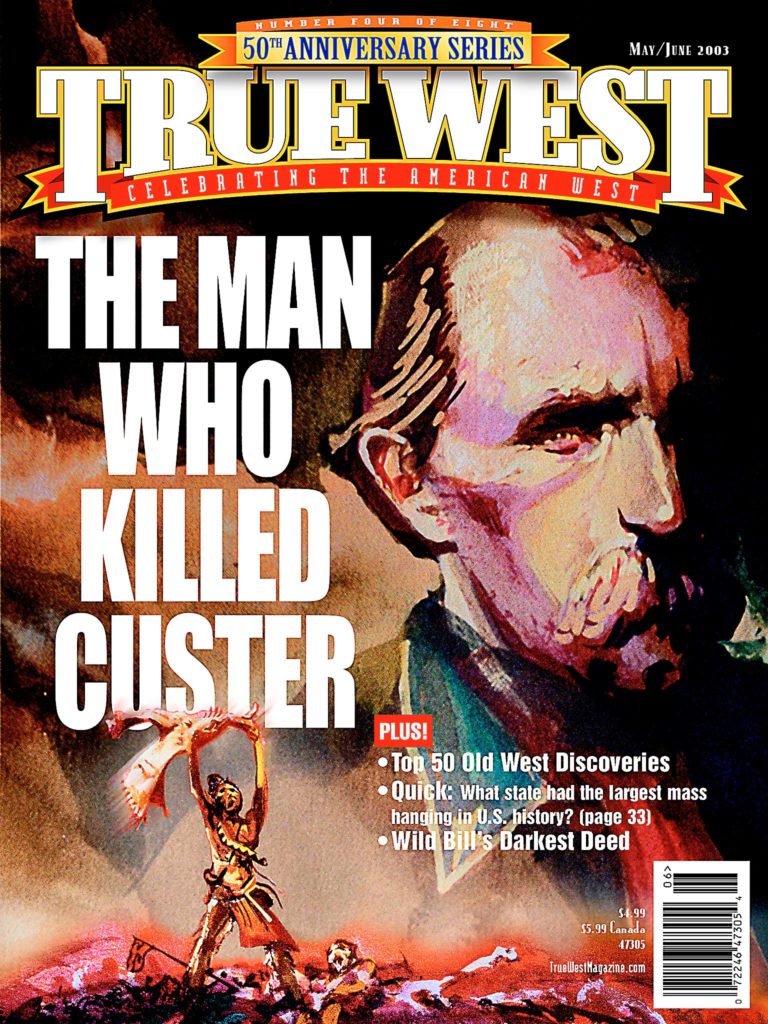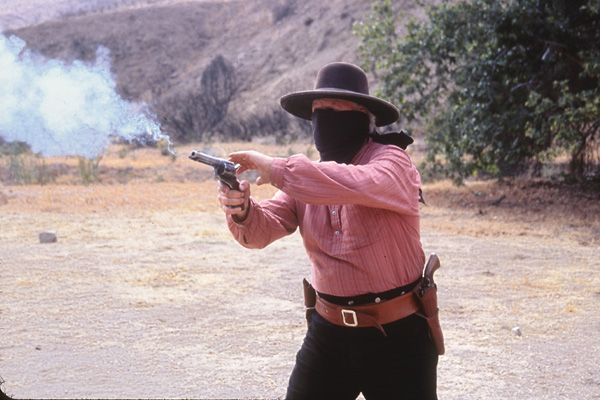 GODS AND GENERALS
GODS AND GENERALS
More than 7,500 re-enactors brought the Civil War to life in Gods and Generals, released on February 21, 2003. Director, producer and film writer Ron Maxwell stressed that if there were no re-enactors, there would have been no movie.
“The reenactors are not just people filling out the background of a scene; not only do they look right in terms of their costumes and their weaponry, but they project the right attitude. I can include them in big close-ups and it looks realistic, because they’re into the moment the way an actor is into the moment.”
The filmmakers recruited thousands of volunteers across the United States, ranging from the 5th Ohio Volunteer Infantry Company H to the 124th New York Regiment—the “Orange Blossoms”—and Company A 1st (West) Virginia Volunteer Infantry.
The re-enactors supplied their own weapons and costumes and added their own historical expertise to the film. When screening for core group members, Dana Heim, the film’s re-enactor coordinator, explained members were chosen based on their looks in costume and their knowledge of the Civil War.
There were approximately 220 re-enactors in the core group, while 33 participated in the entire movie due to “their versatility with their impressions, plus artillery and cavalry experience,” Heim added.
In exchange for the volunteers’ participation, filmmakers donated a half million dollars to the Center for Civil War Living History in Virginia.
And Gods and Generals is living history.
The women on the home front are based on historical journals. Jane Beale (played by Mia Dillow) lived in Fredericksburg, Virginia, during the war and wrote “…experience teaches that those who suffer the tyranny of unjust warfare, learn to cling with a devotion to their principles that they would never have felt under milder influences and our Southern people will not be apt to form the first exception to this general rule.” Hers and other women’s stories live on in their words.
Maxwell says that the film places the characters into the context of their time. Speaking of the African Americans during the Civil War who stayed with the Confederate Army, he explains, “there’s conflicting loyalties—there’s a loyalty to one’s people, a people that was held in bondage, and there’s also a loyalty to place. There’s a loyalty to neighbor, and there was a loyalty to whites that the blacks were living with.”
Historians may argue that slaves had no choice in their loyalty, but even so, Maxwell’s characters are enlivened by the historical research that went into the movie’s production.
The film was screened for accuracy by historical consultants Ed Bearss (winner of the Harry S. Truman Award and the Nevins Freeman Award for Civil War scholarship), Gabor S. Boritt (professor of Civil War Studies and director of the Civil War Institute at Gettysburg College) and John D. Bert (military advisor).
James I. Robertson, author of Stonewall Jackson: The Man, the Soldier, the Legend, endorsed the film, saying it is the first time Jackson has been realistically portrayed in film.
A three-year prequel to Gettysburg, also a Ron Maxwell film, Gods and Generals covers the first battle of Manassas and the battles of Fredericksburg and Chancellorsville, recounting the fights from the point of view of individual participants.
Robert Duvall plays Gen. Robert E. Lee, Stephen Lang plays Gen. Thomas “Stonewall” Jackson, Jeff Daniels reprises his Col. Lawrence Chamberlain role from Gettysburg, Mira Sorvino plays Fanny Chamberlain and Kali Rocha plays Anna Jackson.
VENGEANCE TRAIL
Al Frisch and Kevin Empey of Copper Button Entertainment have long known the film value of Old West re-enactors. As longtime SASS members themselves, the two independent filmmakers recruited members of both SASS (Single Action Shooting Society) and CMSA (Cowboy Mounted Shooting Association) to bring their first production, Vengeance Trail, to life.
And do these folks know their guns.
Frisch’s gun collection was acquired from Stembridge Guns Rentals, a Hollywood prop rental shop where Frisch worked before it closed in 1971.
In Vengeance Trail, you’ll see part of his extensive collection: John Wayne’s “Greeners” from Big Jake, Steve McQueen’s Winchester Model 1876 from Tom Horn (Bob Kentucky, playing hero Jim Dawson, uses this rifle in the film) and a Colt revolver used by John Wayne in The Man Who Shot Liberty Valance. (Gun expert and new True West field editor Phil Spangenberger demonstrates his gun-wielding talents when he handles this Colt during a stagecoach robbery scene.)
Phil Spangenberger is a founding member of CMSA, holding badge #6, and assisted cast members in gun handling. (He also taught Mel Gibson in Maverick, Heath Ledger in The Patriot and Will Smith in Wild, Wild West.) Other CMSA members, Larry Brady and Jeff Wall, join Spangenberger in playing stagecoach robbers.
Vengeance Trail is a suspenseful Western set in 1880s Texas and tells the story of Annie, on the run from an abusive husband, who finds herself the sole survivor of a bloody, stagecoach robbery. She is rescued by a young cowboy, then abducted by a robber hired by her husband.
It was filmed in Arizona and also in Southern California at Disney’s Golden Oak Ranch, Melody Motion Picture Ranch and the Valuzat Brother’s Haskel Canyon movie set.
Frisch’s Placerita Canyon home, with its antique furniture and props, provided a backdrop for the hero’s ranch house and a saloon scene.
Vengeance Trail is due out on DVD and video by April 2003, and Phil Spangenberger tells True West that the Western may air on cable.


